Last-Minute NYC Holiday Gift Guide 🎁
We’ve created a holiday gift guide with presents for the intrepid New Yorker that should arrive just in time—


In recent years, Long Island City has evolved significantly. Forlorn factories, warehouses and small tenements have been rapidly replaced with residential apartment towers. This evolution began on the East River waterfront in the 1990s and has more recently moved inland. Based off current development plans, it has been estimated that up to 20,000 new residents will move to Long Island City in the next five to ten years – doubling the neighborhood’s current population. This is a huge departure from the Long Island City’s industrial roots. Census data from 2010 shows a little over 10,000 people living inLong Island City. Prior to 2010, the population was still lower, with industrial spaces dominant. This shift from industrial to residential, driven by a 2001 rezoning, has resulted in one of the most significantly changed neighborhoods in New York City in architectural terms.
With this change, Long Island City’s once proud industrial history is also disappearing. Factories that once mass produced light switches, cleaning products and water meters have all been replaced with residential housing. The stories associated with these buildings, ranging from tragedy and greed to invention and innovation, have largely faded away.
As a life-long resident of the area, I feel compelled to document this change as best I can. In doing so, I recently produced a 218 page book, filled with 332 color photos and detailed histories of twenty-one buildings located along the 7 line subway route as it runs above ground, between Queens Plaza and the tunnel at Hunterspoint Avenue. Nearly half a million daily commuters ride the 7 train, viewing a rapidly changing landscape along the way. Writing a book about the buildings located (and formerly located) along this route seemed an interesting way to frame both neighborhood history and the dramatic changes taking place which will eventually render the much of this route surround by high rise apartment buildings.
Here’s are ten of my favorite such buildings. Some still exist for the moment, while others have recently been taken down.
To purchase a copy of “7 Line L.I.C.”, click here and receive 20% off using promo code “untappedjanuary” – offer ends January 31st.
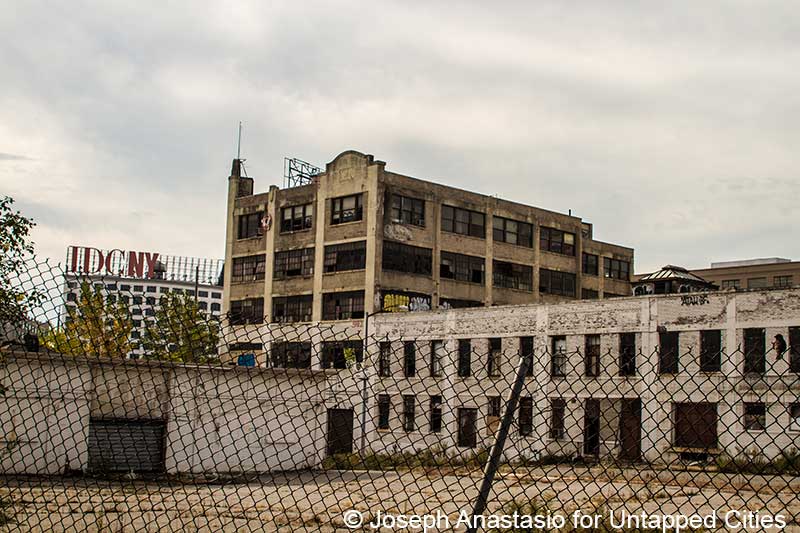
The C.N. West Chemical factory at Queens Plaza made a large variety of cleaning products. Founded in the late 1800s, C.N. West was eventually renamed West Disinfectant, and moved out of New York City in the late 1970s. The factory became an outlet mall called “QP’s Marketplace” in the 1980s, an artists cooperative studio called ‘The Space’ in the 2000s, and in its last years of existence (2013), an abandoned space which became a bespoke illegal graffiti gallery. One very little known fact is that one of C.N. West’s principal owners was a victim of the Titanic sinking in 1912.
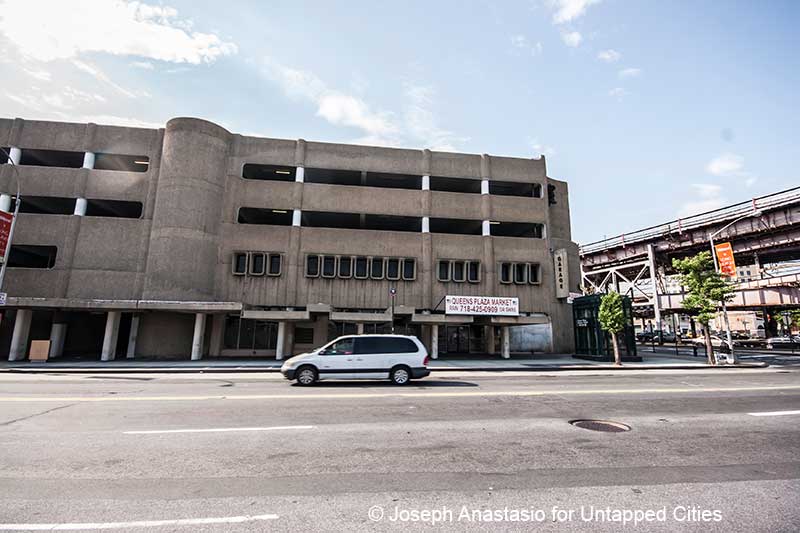
The Queens Plaza Parking garage was built in 1975 and demolished in early 2009. This city owned garage was once compared to “a 1970’s filmmaker’s idea of an intergalactic battle station” by the New York Times. Despite its ugly appearance, the garage had a 1070 car capacity. Since the demolition of this garage, parking garage rates in Long Island City have skyrocketed, with most garages currently charging around $350 per month. The lone remaining Department of Transportation-owned parking garage in the area, at Court Square, changes $200 per month, though monthly spaces have been reduced and long time customers have compared getting a monthly space to “The Hunger Games.”
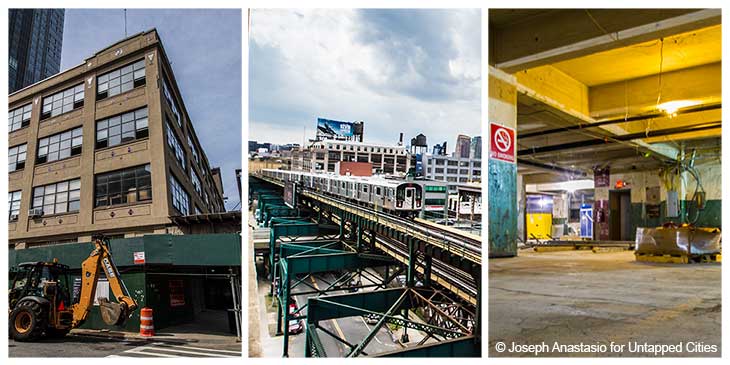
The former Eagle Electric factory on Queens Plaza south currently faces an uncertain future. For decades, Eagle Electric was one of the premiere producers of light switches, electrical sockets, fuses and extension cords. Eagle had several factories in Long Island City and Astoria. Despite a commitment to stay in the area, Eagle was eventually bought by another company which relocated the production lines – bringing an end to 80 years of this company being one of L.I.C’s largest blue collar employers.
Previously slated for demolition, this factory may have a future as retail space, which the neighborhood is sorely lacking. The Queens Plaza and the Court Square area may be the one neighborhood in New York City that lacks a chain drug store (attention Duane Reade, CVS). A building this size, with open floor space, could also be appealing to larger chain retail, like Target.
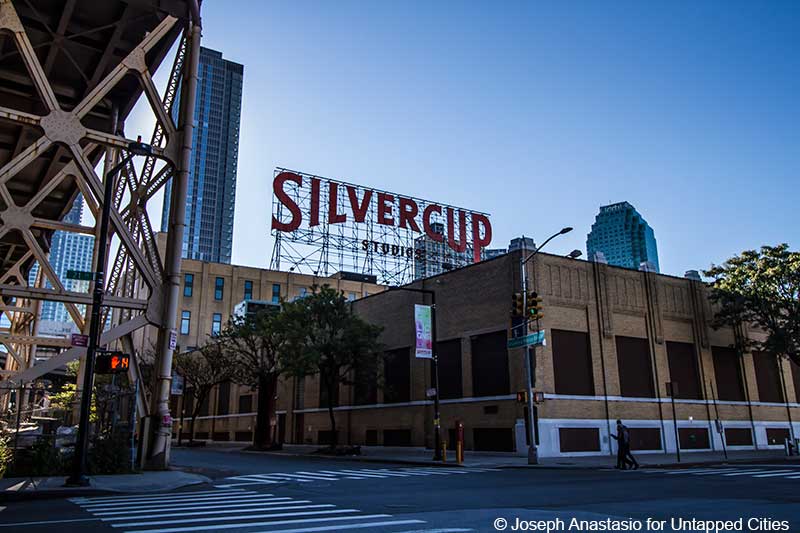
Prior to the late 1970s, Silvercup Studios was a massive bakery called Silvercup Bakery. The bakery closed after a strike by its unionized drivers over a pay dispute. The Suna family bought the building in 1980 and converted into the TV studio that it is today. It is currently home to filming for Quantico, Madam Secretary, and Girls. In the past, scenes from Mr. Robot, The Sopranos, 30 Rock and a host of other shows have been filmed here.
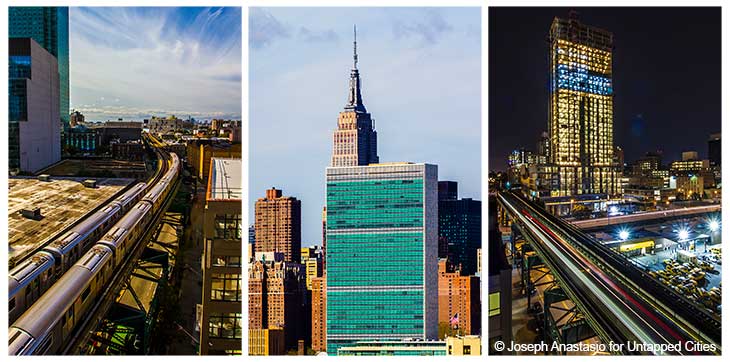
For decades, this seven floor unnamed factory building, located at 43-10 23rd Street, was the tallest structure along the 7 train. Over the years it has been home to a variety of small workshops and businesses. In the 1970s a portion of the building was home to the Hashizume food corp – one of the earliest makers of tofu in the United States.
The height of this building, combined with a massive balcony space all along the top floor of the building (a result of this floor being added after the building was completed), makes it an ideal viewing platform for the length of the 7 line elevated along 23rd street. Neighboring buildings have been used for filming scenes in Jessica Jones and Daredevil. Additionally, scenes from Luke Cage were also filmed under the 7 line tracks.
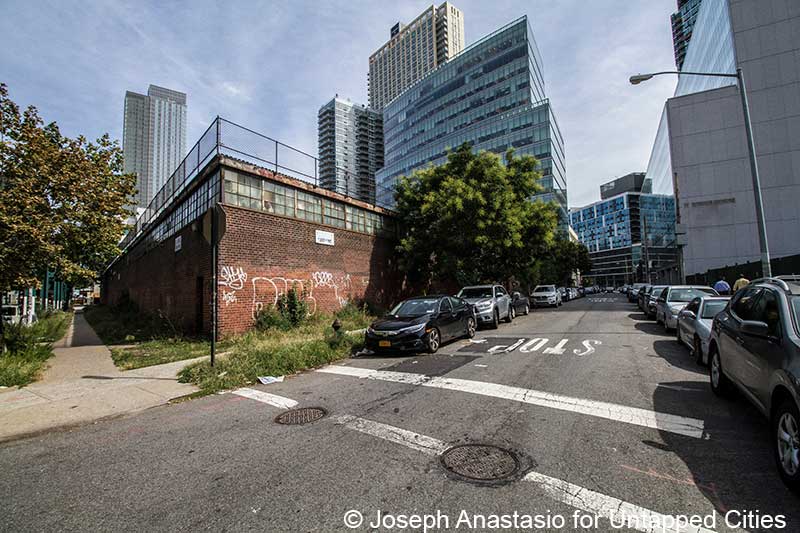
At 44th road, a short, sign-less warehouse formerly used by Bergdorf Goodman currently stands abandoned. The interior and roof have undergone asbestos abatement in preparation for the buildings’ eventual demolition. Current plans are to replace it with a 66 floor apartment high rise. While this building isn’t particularly special, it is symbolic of the dramatic changes taking place in Long Island City. today.
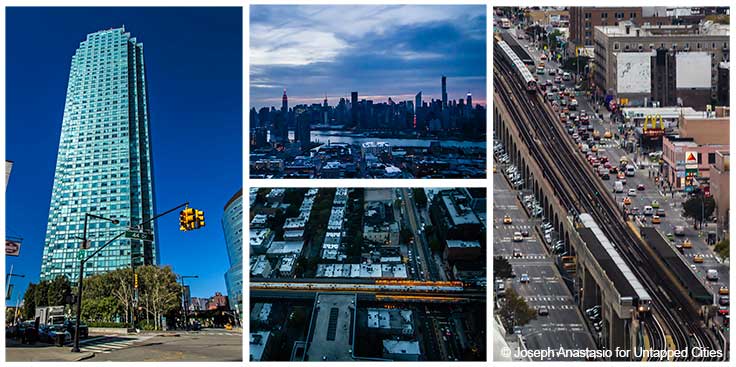
One Court Square, also better known locally as the Citibank (or Citi) building, was the first high rise in Long Island City. Today it remains as the tallest building in Queens, though it will likely lose this title soon. Up until recently, the upper floors of this building offered uninterrupted views of the entire New York City area. On a clear day one could see as far north as the Tappan Zee Bridge, as far east as Nassau County, the Manhattan skyline to the west and all of Brooklyn to the south.
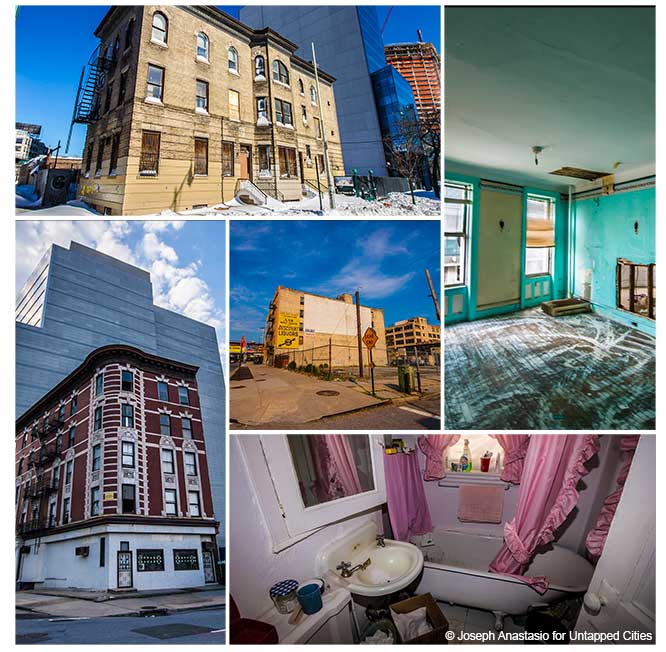
Aside from the usual industrial spaces, Long Island City was sprinkled with small tenements and historical wood frame houses. These buildings are becoming the exception now, as developers are offering an ever increasing amount of money to their owners in order to tear them down and replace them with taller structures—each of the three buildings photographed above have been taken down. These older buildings, with their mortgages long paid off, had significantly lower rents than the new developments.
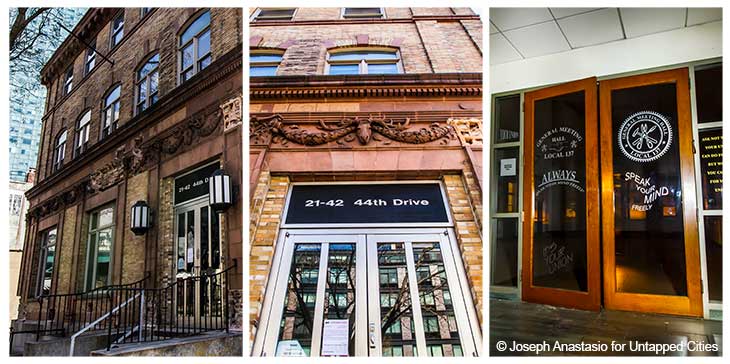
One of the bigger points of contention for neighborhood preservationists has been the decimation the Long Island City Elks Lodge buildings. Despite local efforts to save the building, the NYC Landmarks Preservation Council denied it protection. It has suffered a very long death throughout 2016, with interment asbestos abatement and interior demolition. There hasn’t even been a ‘good faith’ effort to remove and preserve its unique terra cotta architectural elements. Soon nothing will be left of this building, other than resentment of its passing.
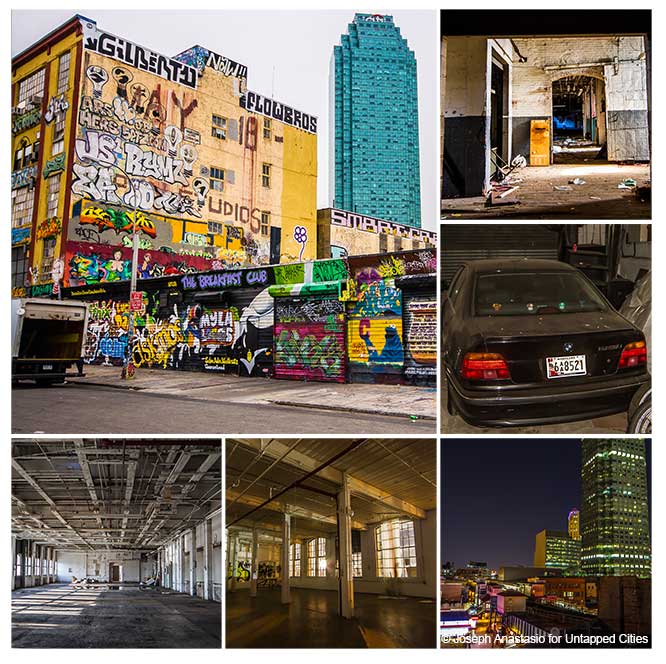
The Neptune Water Meter factory was another L.I.C. manufacturer that is long gone and often forgotten. After the company left in, the buildings soldiered on as artist studios and light manufacturing. In the 1980s the building became an easy target for graffiti vandals who eyed rooftops along elevated subway lines as a new canvas in the wake of subway trains being cleaned. Eventually the factory exterior became a permission based graffiti gallery, first called “Phun Factory” and later re-branded “5 Pointz” under the leadership of Jonathan “Meres” Cohen. It was also used in numerous TV & movie productions, including in the final scenes of Now You See Me (2013 movie) & Rescue Me (FX TV show). After sitting abandoned for a few months, it was demolished in late 2014, and will be replaced with two residential towers.
To purchase a copy of “7 Line L.I.C.”, click here and receive 20% off using promo code “untappedjanuary” – offer ends January 31st.
Next, check out the the secrets of Socrates Sculpture Park also in Long Island City.
Subscribe to our newsletter